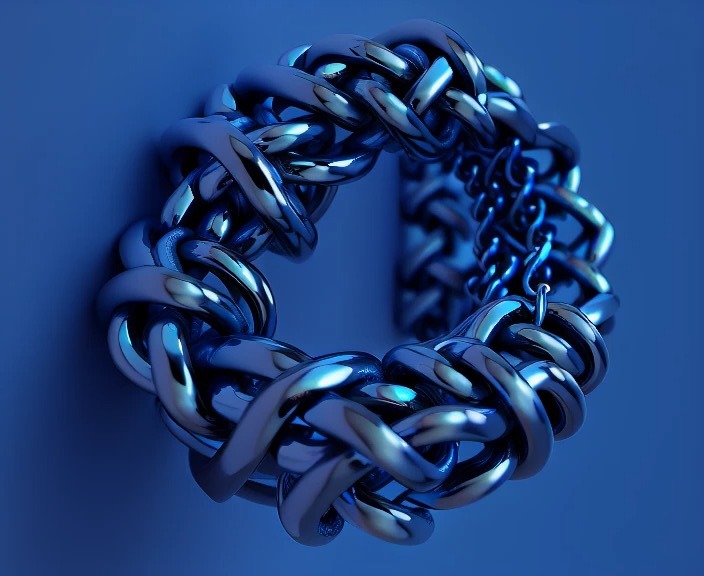How does Wikipedia do it?
Ten years ago, they dominated Google’s search results, appearing on page one 46% to 60% percent of the time, depending on who you ask. With one-word search queries, Wikipedia appears on page one 8 out of 10 times.
Wikipedia continues to dominate.
A big part of this is the fact that Wikipedia uses internal linking to establish strong topical authority across millions of pages. Today we’ll take a deeper look at this, outlining action steps you can take to inking plays in establishing topical authority.
Why internal linking is the most important SEO tactic
Here it is straight from Google’s documentation on How Search Works:
“There isn’t a central registry of all web pages, so Google must constantly look for new and updated pages and add them to its list of known pages. This process is called “URL discovery.” Some pages are known because Google has already visited them. Other pages are discovered when Google follows a link from a known page to a new page: for example, a hub page, such as a category page, links to a new blog post. Still, other pages are discovered when you submit a list of pages (a sitemap) for Google to crawl.” (emphasis added)
Internal linking is fundamental.
We’ve had countless SEO expert guests on iPullRank’s Rankable Podcast share that it’s their best SEO tactic.
Google uses known content as a bridge to new and updated content on your site. Internal linking is the most important organic search tactic because it helps Google find, index, and understand the content on your site. Aside from content engineering, internal linking is completely under your control.
You control the content and URL on pages you link to, the anchor text, and the type of internal link used.
What’s the role of PageRank?
While some SEOs believe PageRank is an irrelevant metric, Google Search Analyst Gary Illyes had this to say about PageRank.
DYK that after 18 years we’re still using PageRank (and 100s of other signals) in ranking?
— Gary 鯨理/경리 Illyes (@methode) February 9, 2017
Wanna know how it works?https://t.co/CfOlxGauGF pic.twitter.com/3YJeNbXLml
Contrary to what other experts may believe, PageRank is still an important signal (one of hundreds). That means it’s still an important ranking signal for SEOs.
So how does internal linking impact PageRank and CheiRank?
PageRank focuses on inbound links (internal and external), while CheiRank focuses on outbound links. Both algorithms are used to measure the importance or strength of web pages. Here’s a more precise definition:
“PageRank, [is] an algorithm used by Google to rank websites: it counts the number and quality of links to determine the importance of the page. Google also uses a different algorithm, CheiRank, which determines the importance of a page based upon its number of outgoing links.
The PageRank algorithm gives a high rank to popular nodes, while CheiRank identifies communicative nodes. CheiRank and PageRank both rank each node, so the two algorithms give you a two-dimensional ranking of nodes in the network.”
Internal links help Google distribute PageRank around your site. The more internal links a page has, the higher the PageRank of that specific web page. It’s important to keep E-E-A-T in mind here; quantity and quality are both essential. CheiRank (PageRank inverted) plays an important role here as well.
How link equity factors into internal linking
Link equity is the lifeblood that carries PageRank from one page to another throughout your site. Here’s what Google looks at when calculating the PageRank of your web page(s).
- The relevance, relationship, quantity, and quality of inbound links (PageRank) on each page
- The relevance, relationship, quantity, and quality of outbound links (CheiRank) on each page
- The PageRank (value) of each linking page
This is great news when you realize both internal and external links can pass link equity. The key question then is this:
Which links pass link equity?
You’ll want to ask some questions about the links in your portfolio.
- Is this link relevant? If you’re reading a page about digital cameras and you link to a page on lighting, these pages are relevant.
- Is the linking site authoritative? A link from Apple carries more weight than a link from your personal web page.
- Can this link be crawled? If the link is blocked (via robots.txt) or inaccessible, the link obviously can’t or won’t pass link equity.
- Is this link do-follow? No-follow links don’t have/pass link equity. No-follow tells Googlebot to ignore these links.
- Where is the link placed? John Mueller confirms that these module links (links placed in the navigation, footer, related content, etc.) aren’t as valuable as the links in the body content.
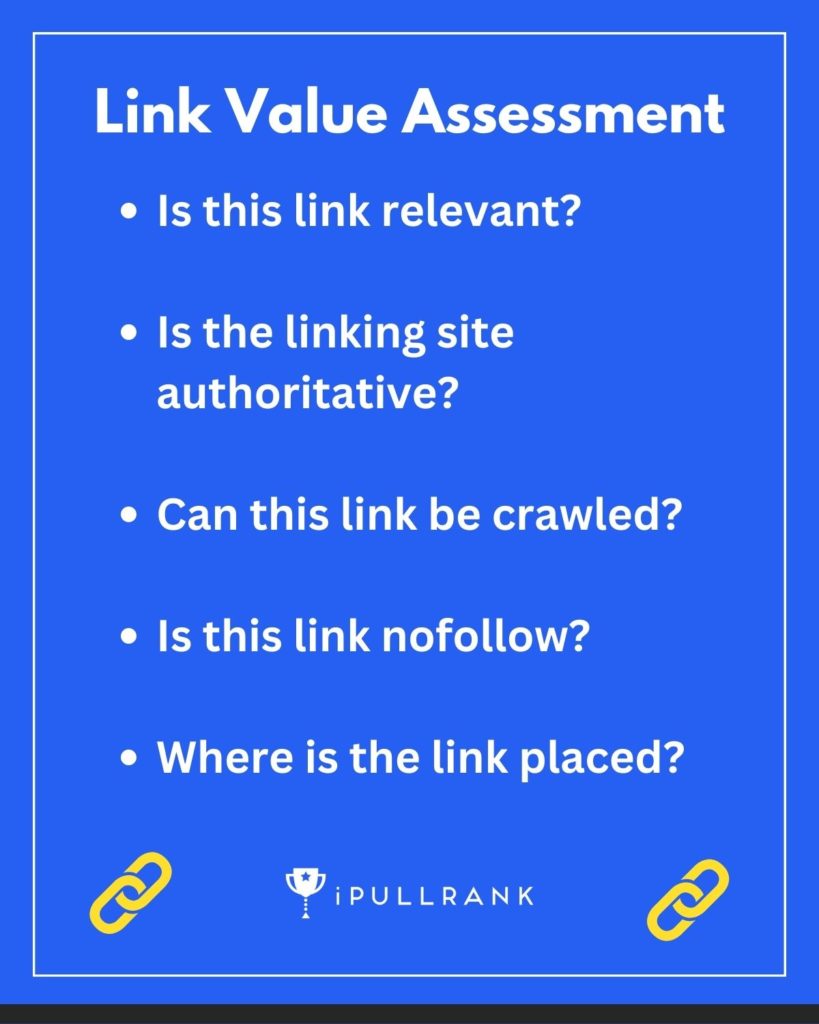
From an internal linking standpoint, relevance seems to be the significant player here. When you think about it, this makes sense since entities are essential to Google’s Knowledge Graph.
While link relevance continues to be critical, don’t forget about content relevance. Want to check the relevance of your page for a target keyword in comparison to the other top 10 ranked pages? Try our free content relevancy diagnostic tool Orbitwise.
Enter your keyword and domain and get your relevancy score based on Cosine Similarity.
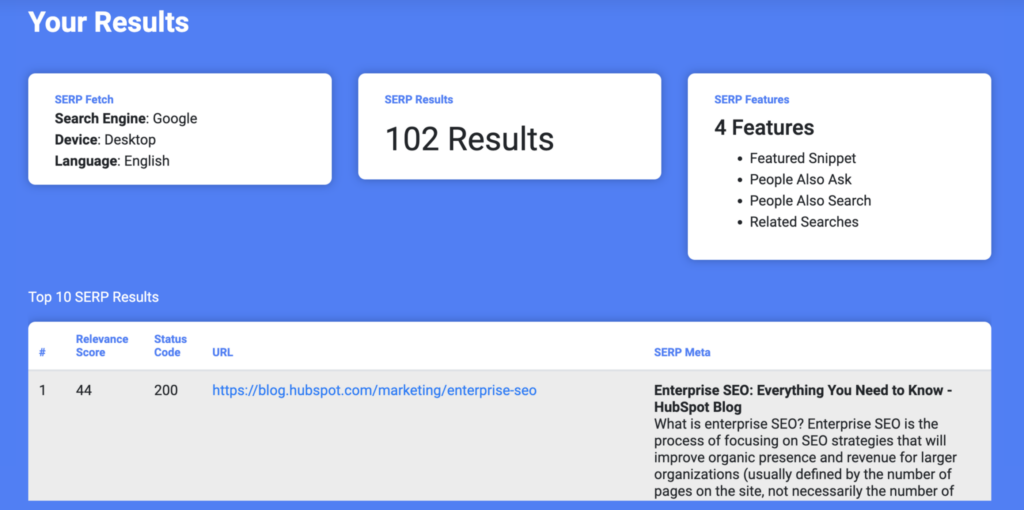
Your content relevance is directly tied to your brand as an entity.
Entity SEO and internal linking
Building out your entities can establish topical authority in SEO. Unfamiliar with entities? They are similar to nouns.
“An entity is a real-world object; it can be a person, place, product, company, etc., anything (physical or abstract) that can have a proper name. Examples of entities could be Malcolm Gladwell, Cadillac, Harambe, or Wimbledon. Entities can be viewed as entity instances (e.g., Malcolm Gladwell is an instance of an author, Cadillac is an instance of a car, and Wimbledon is an instance of a city/event).”
Read More: Why Entity SEO Needs To Be the Foundation of Your Organic Search Strategy
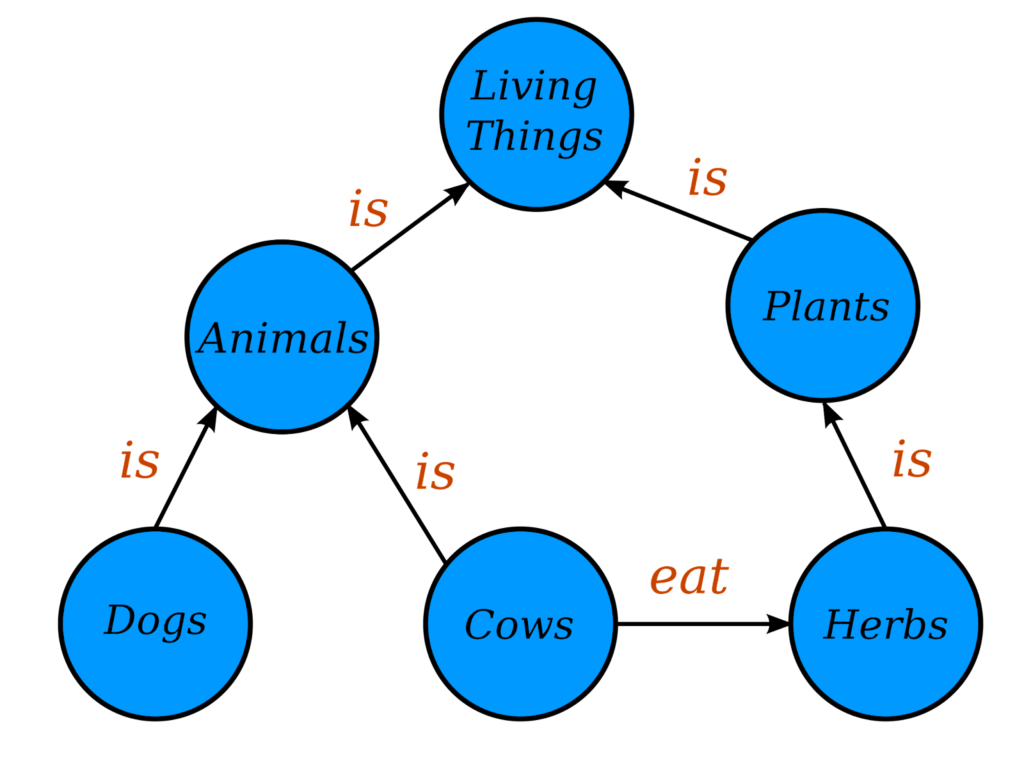
Makes sense, right?
Well, your internal links are the connections, the links between these entities (see what I did there?). This gives Google the essential information to define and contextualize relationships between everything.
This means an entity-first optimization strategy is the way to go.
Here’s the best part about an entity-first optimization strategy. If you’ve done the upfront legwork needed to set this up, you will also have the clarity you need to categorize, manage, and optimize the internal links on your site.
First, you’ll want to lay out an information plan that outlines the taxonomy, tagging, navigation, and linking structures. This plan will also outline the information architecture for your site. This information plan shows technical teams how a site (and content) should be built, structured, and maintained.
Second, you’ll clearly understand the content categories, subcategories, hubs, and individual pages you need.
For example:
Category: Motorcycles,
Subcategories: Cruiser, sport bike, touring bikes, off-road,
Individual pages: Kawasaki Ninja, Honda Goldwing, Harley-Davidson Sportster, etc.)
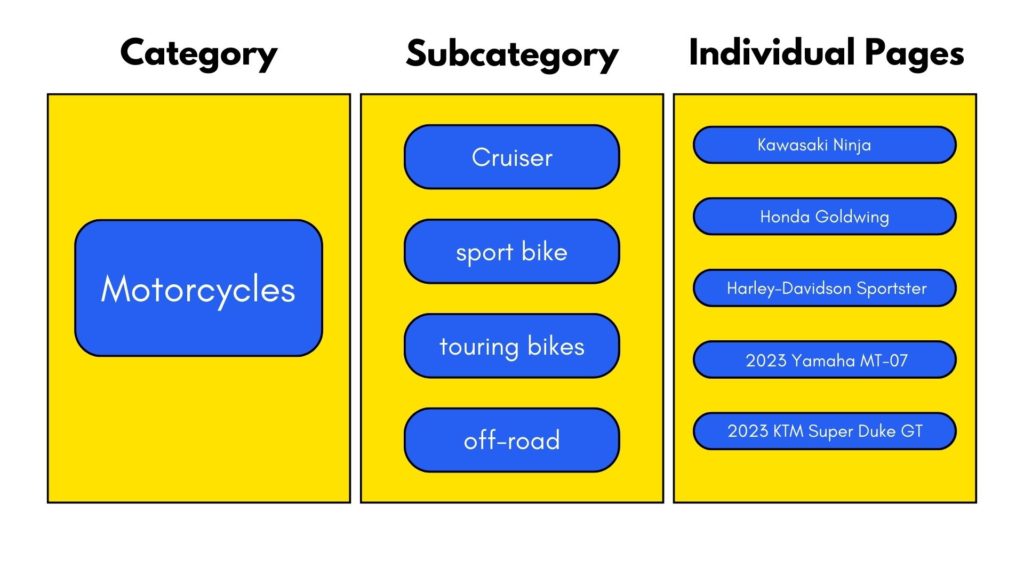
Finally, you’ll understand the formats, and channels your target audience needs/wants (e.g., posts, video, slides, images, infographics, voice, mobile, etc.) and the URLs for each.
But why?
Why are these three steps important to internal linking and topical authority?
The relationship between internal linking, site architecture, and topical authority
What exactly is topical authority?
When you have topical authority, Google and searchers both believe that your content satisfies the user’s intent and provides the greatest value to your audience. Here’s the thing about that; your audience consists of three groups.
- Your audience (e.g., readers, followers, customers, influencers, etc.)
- Actual and ideal customers
- Google (e.g., Google News, Maps, Search, etc.)
What’s interesting about item number three is that you’ll need to treat Google as another persona or audience member you need to satisfy. If you’ve achieved topical authority, Google believes you’ve created content that satisfies the user’s intent and provides the greatest value to all three groups.
This seems tough.
But it really isn’t; it all boils down to doing what’s best for users. That’s what Google has been telling us for the last twenty years, “focus on the user, and all else will follow.”
So what’s the connection here?
How do internal linking, information architecture, and topical authority relate?
Information architecture (IA) is the blueprint. It’s a set of best practices that provides site governance. Information architecture tells you how to structure and organize your information so it’s easy to use. Rand Fishkin shared several IA best practices; I’ll recap these here.
- Broad-to-narrow organization: The motorcycle example I shared above is an example of broad to narrow organization (e.g., motorcycle > sport bike > kawasaki ninja).
- Link to evergreen pages from fresh content: This is a great way to create topic clusters; linking fresh content to evergreen (pillar) content helps Google better understand your content, including subtopics and related topics.
- Make sub-pages if the intent is unique, combine if not: This one is fairly straightforward. If your content is unique, will satisfy the user’s intent, and will create value, making a sub-page makes sense. If it’s not, you’re better off updating or expanding on existing content pieces.
If you’ve done your homework, you’ve planned, structured, outlined, and produced high E-A-T content that satisfies user intent. IA tells your team how to organize your content; internal linking links these topic clusters (nodes) together. This produces the kind of topical authority Google and users want to see.
So this means:
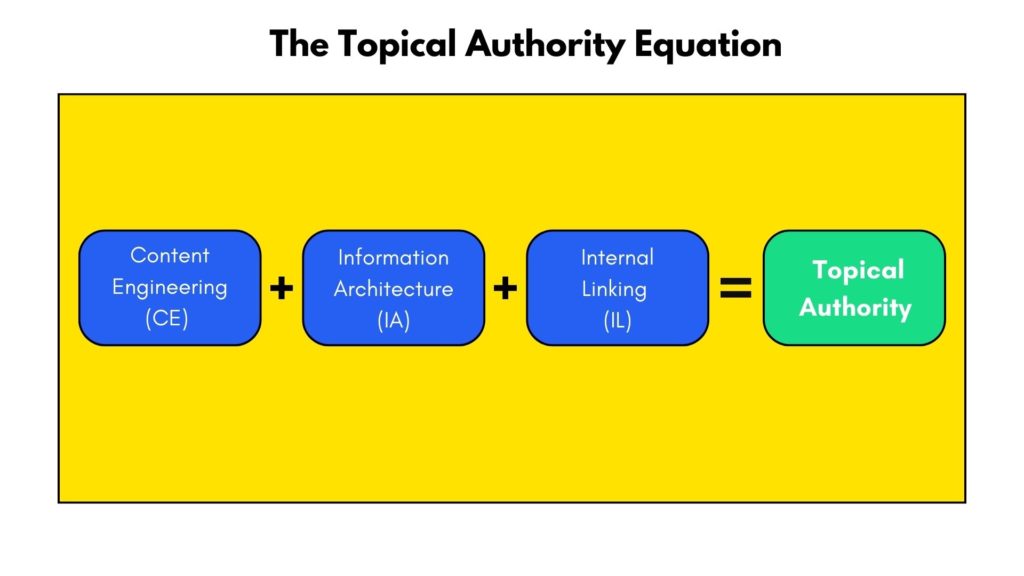
Content Engineering (CE) + Information Architecture (IA) + Internal Linking (IL) = Topical Authority
That’s great for Google, but what about users?
It’s a perfect fit for users, good content engineering, and information architecture because it satisfies the user intent.
How can you tell if you have poor internal linking?
It’s all about best practices.
If you’re focused on the user intent, you will emphasize relevance and quality. But these criteria, while helpful, aren’t enough. How can you tell if your internal linking needs work?
- Broken links: This is obvious. Broken links don’t pass link equity and certainly don’t improve the user experience. According to Semrush, 42.5% of websites in their study had broken internal links.
- Too many on-page links: John Mueller, Webmaster Trends Analyst at Google, stated that using too many internal links will decrease their overall value.
- Redirect chains and loops: A redirect that leads to yet another redirect that points back to the original redirect creates an endless loop that’s difficult for crawlers and creates user errors.
- Temporary and permanent redirects: Temporary (302) redirects tell Google to save both the old and new URLs, which is problematic for a variety of reasons. Permanent (301) redirects pass link equity, which sounds great until you have a massive number of permanent redirects you need to deal with. Redirects consume crawl budget, so a better idea would be to change permanent redirects to a target page URL instead.
- No-follow attributes on outgoing links: As I mentioned earlier, this tells Googlebot to ignore your link, which means no link equity will flow from your outgoing link. Google changed things up with PageRank, so we honestly have no idea whether we’re losing PageRank or not. It’s best to avoid no-follow on internal links.
- Orphaned web pages: These are pages with no inbound (internal) links. This makes it difficult to find and less likely to be indexed. If your orphan pages serve a specific purpose, ensure they’re not listed in your sitemaps.
- Page Crawl Depth of More than 3 Clicks: Imagine having to find your way through a site that’s five to seven layers deep (e.g., motorcycle > tourer > sports tourer > dual sports tourer > Kawasaki Ninja 1000SX). These are difficult for crawlers and users to find. It’s not great for the user experience, and it’s bad for business.
- Pages with one inbound (internal) link: Again, these pages are difficult to find. They’re not orphan pages, but they’re not much easier to find. The more links (within reason) you have pointing to your pages, the easier it will be for Googlebot and users to find.
Let’s say your internal links need work. Which tools are best for the job?
Tools to measure your internal linking performance
Here’s a list of tools to measure your internal linking performance.
Using these tools, you should be able to address all of the internal linking issues mentioned above and conduct regular site audits. These tools provide detailed on-page analysis but also handle measurement, monitoring, and analysis at scale.
Internal linking strategies for your industry
Aside from internal linking best practices, what internal linking strategies can you use to build topical authority in your industry? Let’s look at some examples.
Ecommerce
- Add the following link categories to your product pages:
- a.) Customers Who Viewed This Item Also Viewed
- b.) Customers Who Bought This Item Also Bought
- c.) Recommended For You

d.) Best Sellers
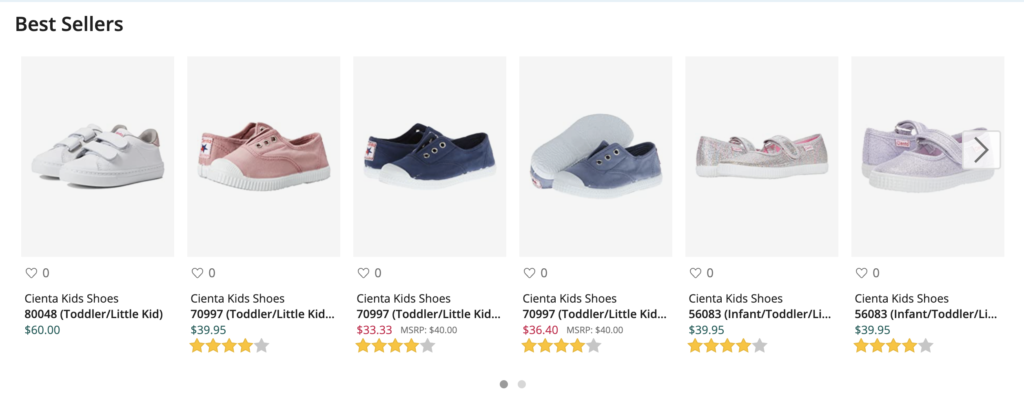
e.) Top Brands
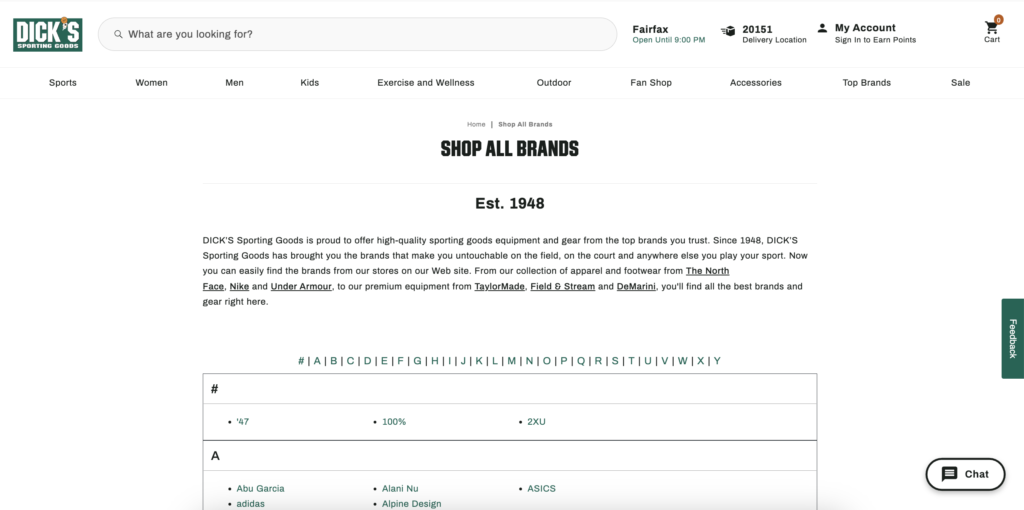
- Add a link to your Glossary of terms to your product pages. Then, on your glossary page, link to your product page categories.
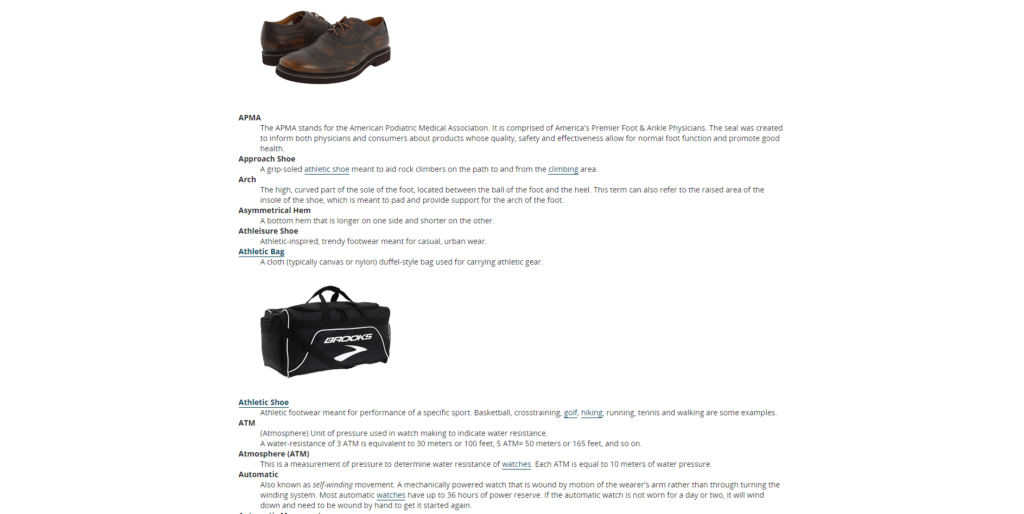
- Add links to category pages from new blog posts and shopping guides
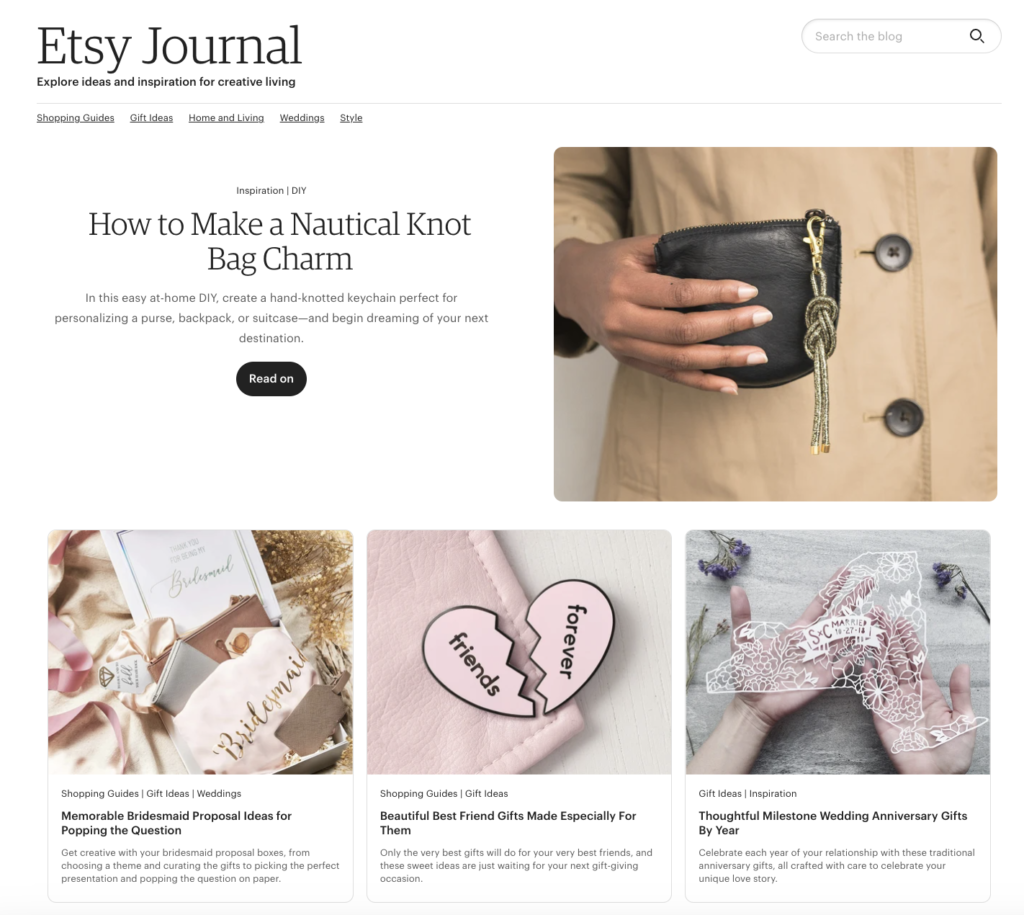
- Add evergreen links to fresh blog posts.
- Keep your sitemaps with fresh links, and monitor for internal linking problems
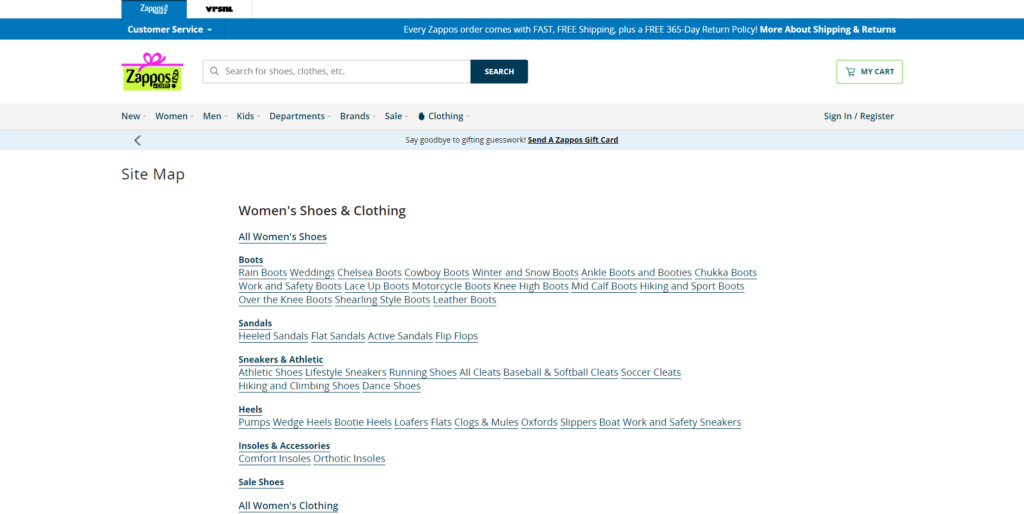
Media / Publishers
- Google uses your home page and subsections to discover the latest news. Treat your home page as a table of contents that’s updated daily. Link to trending and evergreen that’s not hidden behind a paywall.
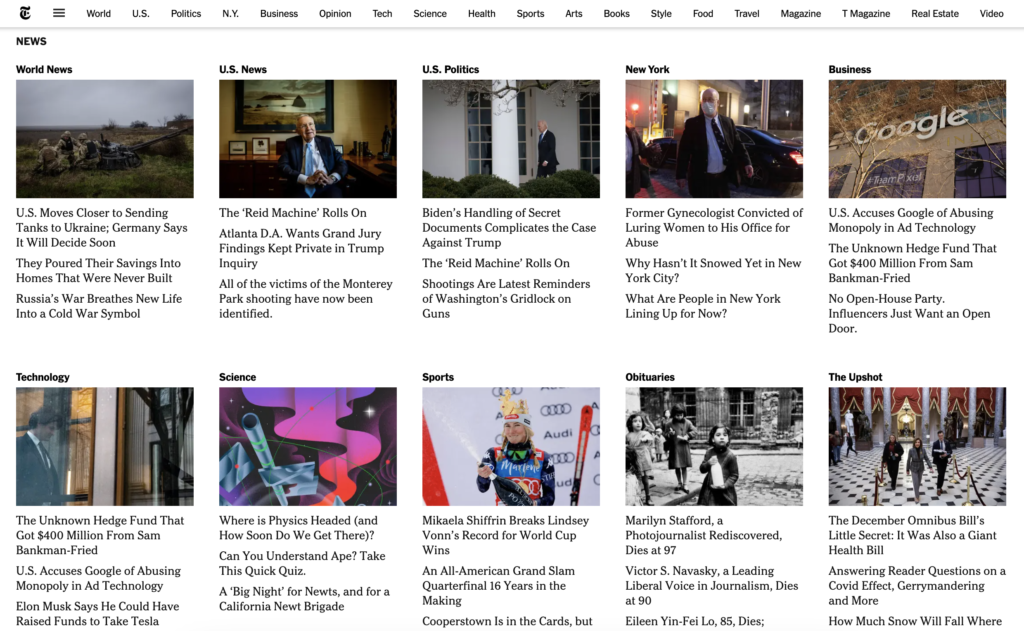
- Add a “latest news,” “related articles,” or trending articles widget to the sidebar to promote relevant content on the home page, news stories, and special interest pieces.
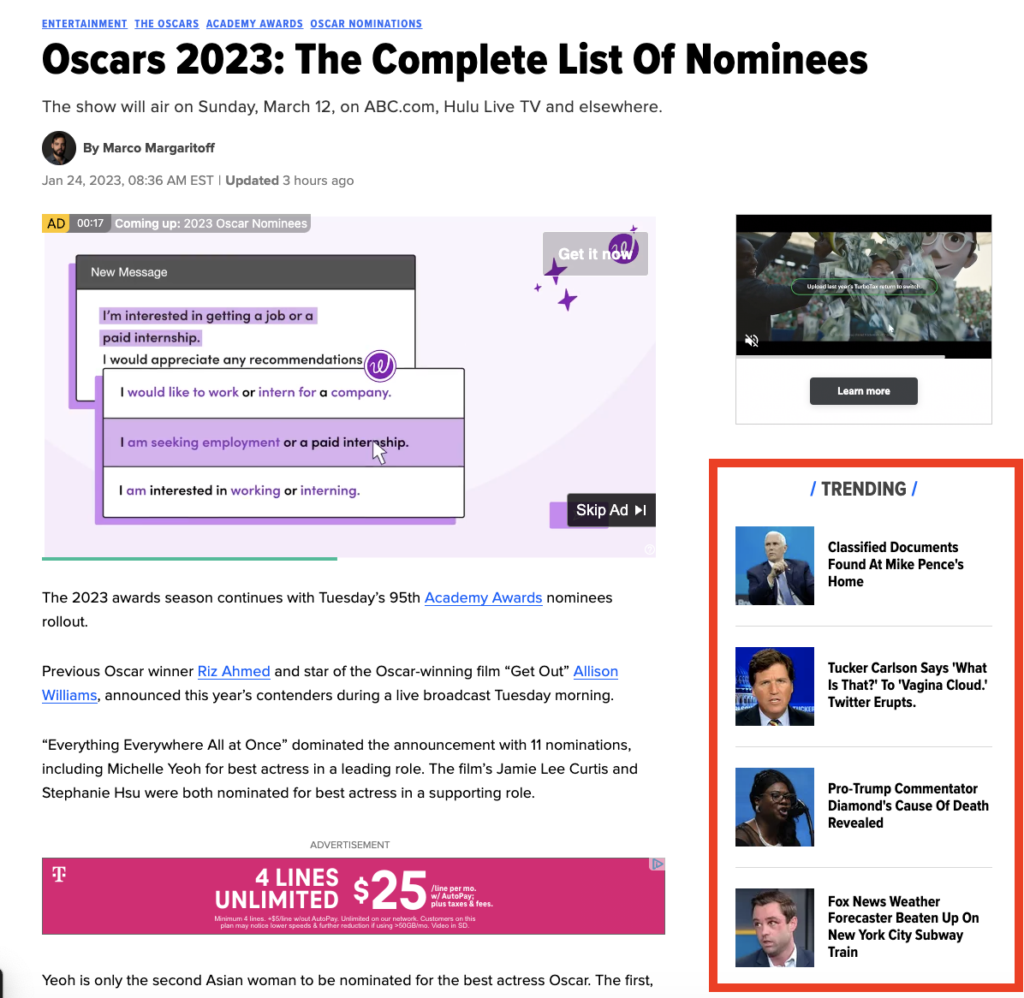
- Modifying website architecture in favor of a clean, minimalist design is a disaster for search performance. Look for ways to feed Google with internal links.
- Create your News sitemap and submit it through Google Search Console. Google wants you to “upload your sitemap to the directory that contains your news articles or a directory closer to the root of your site.”
- Use internal article links to boost internal links. Create sidebars that use popularity-based, relevance-based, personalized, and editorial sidebars to increase internal links.
Internal linking is the most important SEO tactic
It’s a fundamental part of organic search.
Google uses known content as a bridge to new and updated content on your site. Internal linking is the most important organic search tactic because it helps Google find, index, and understand the content on your site. Even better, internal linking is completely under your control.
Link equity is the lifeblood that enables PageRank to flow from one page to another throughout your site.
It’s also the fast track to topical authority.
Achieving topical authority means Google believes you’ve created content that satisfies the user’s intent, providing the greatest value to your audience. The formula is simple – Content Engineering (CE) + Information Architecture (IA) + Internal Linking (IL) = Topical Authority. Follow these steps, and you’ll find it easier to attract the traffic and conversions you’re looking for.
Next Steps
Here are 3 ways iPullRank can help you combine SEO and content to earn visibility for your business and drive revenue:
- Schedule a 30-Minute Strategy Session: Share your biggest SEO and content challenges so we can put together a custom discovery deck after looking through your digital presence. No one-size-fits-all solutions, only tailored advice to grow your business. Schedule your session now.
- Mitigate SGE’s Potential Impact: How prepared is your SEO strategy for Google’s Search Generative Experience? Get ahead of potential threats and ensure your site remains competitive with our comprehensive SGE Threat Report. Get your report.
- Enhance Your Content Relevancy with Orbitwise: Not sure if your content is mathematically relevant? Use Orbitwise to test and improve your content’s relevancy, ensuring it ranks for your targeted keywords. Test your content today.
Want more? Visit our Resources Page for access to past webinars, exclusive guides, and insightful blogs crafted by our team of experts. Everything you need to keep your business ahead of the curve is right at your fingertips.
Take the next step with iPullRank.
